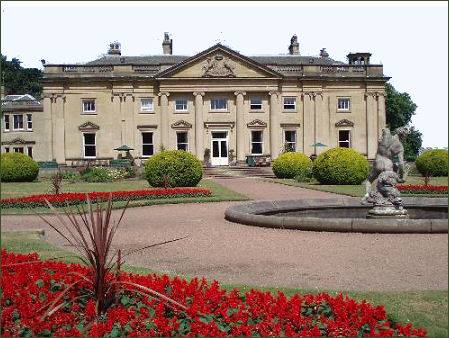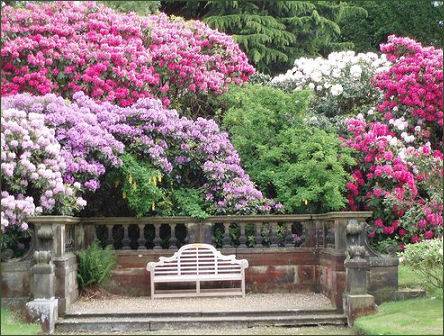Wortley Hall
OS grid reference:- SK 322 965
Wortley Hall is situated in the small South Yorkshire village of Wortley, to the south of Barnsley. For more than six decades the hall has been chiefly associated with the British Labour movement. It is currently used by several trades unions and other organisations as a venue for residential training courses and other meetings, as well as for purely social gatherings.


The hall is set in 26 acres of gardens and woodlands. 11 acres of this are the formal gardens which boast magnificent views through the vale of Worsborough and beyond. The present ornamental gardens at Wortley date back to the early 1800s when the estate was in the hands of James Stuart Wortley and his wife Lady Caroline. The gardens are open to the public free of charge.
The manor house at Wortley was rebuilt by Sir Richard Wortley in 1586. During the Civil War his son Sir Francis Wortley, 1st Baronet, along with his influential ally Sir Thomas Wentworth of nearby Wentworth Woodhouse, was a Royalist and fought for the cause of King Charles I. He commanded a loyalist garrison at nearby Tankersley, and fought at the battle of Tankersley Moor in 1644 where he was captured by the Roundheads. Sir Francis was imprisoned in the Tower of London and on his release in 1649 had to pay a heavy fine to recover his property. Wortley was eventually inherited an illegitimate daughter who married Sidney Montagu, second son of the Earl of Sandwich.
The Hall was significantly remodelled by Giacomo Leoni in 1742-46 and the East Wing added in 1757-61 for Sir Edward Wortley Montagu, MP and Ambassador to the Ottoman Empire who died in 1761. He left it to his daughter Mary, who had married Prime Minister John Stuart, 3rd Earl of Bute. It was later inherited by their son, Colonel James Archibald Stuart (1747-1818), who added the surname Wortley to his own. From him it passed to his son Colonel James Archibald (1776-1845) who was MP for Yorkshire from 1818 to 1826, when he was created Baron Wharncliffe. Edward Montagu-Stuart-Wortley-Mackenzie, 3rd Baron Wharncliffe was created Earl of Wharncliffe in 1876. The Hall was the seat of the Earls of Wharncliffe until the Second World War, when it was used by the British Army, after which its structural condition deteriorated.
